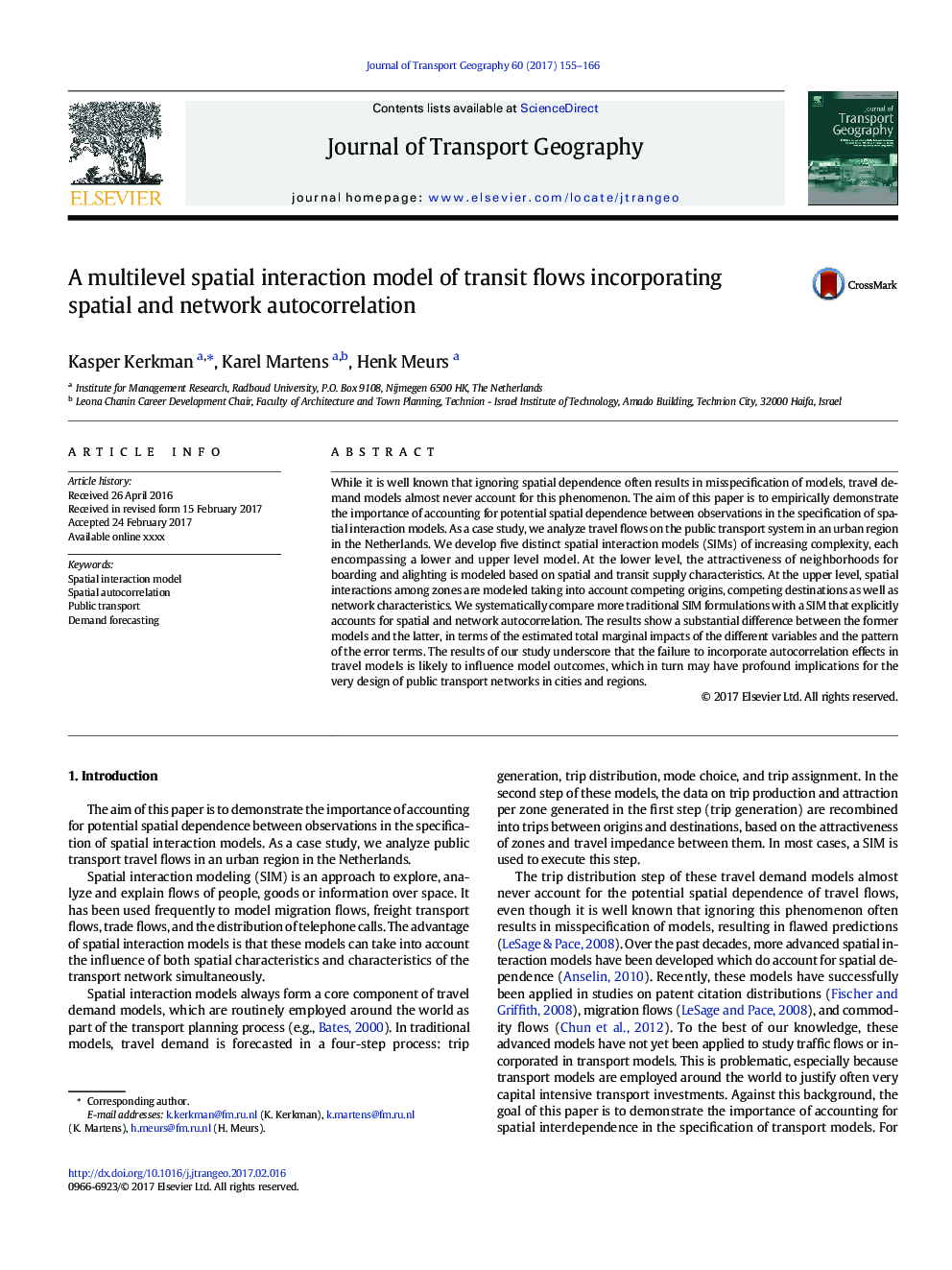| Article ID | Journal | Published Year | Pages | File Type |
|---|---|---|---|---|
| 5117501 | Journal of Transport Geography | 2017 | 12 Pages |
Abstract
While it is well known that ignoring spatial dependence often results in misspecification of models, travel demand models almost never account for this phenomenon. The aim of this paper is to empirically demonstrate the importance of accounting for potential spatial dependence between observations in the specification of spatial interaction models. As a case study, we analyze travel flows on the public transport system in an urban region in the Netherlands. We develop five distinct spatial interaction models (SIMs) of increasing complexity, each encompassing a lower and upper level model. At the lower level, the attractiveness of neighborhoods for boarding and alighting is modeled based on spatial and transit supply characteristics. At the upper level, spatial interactions among zones are modeled taking into account competing origins, competing destinations as well as network characteristics. We systematically compare more traditional SIM formulations with a SIM that explicitly accounts for spatial and network autocorrelation. The results show a substantial difference between the former models and the latter, in terms of the estimated total marginal impacts of the different variables and the pattern of the error terms. The results of our study underscore that the failure to incorporate autocorrelation effects in travel models is likely to influence model outcomes, which in turn may have profound implications for the very design of public transport networks in cities and regions.
Related Topics
Life Sciences
Environmental Science
Environmental Science (General)
Authors
Kasper Kerkman, Karel Martens, Henk Meurs,
